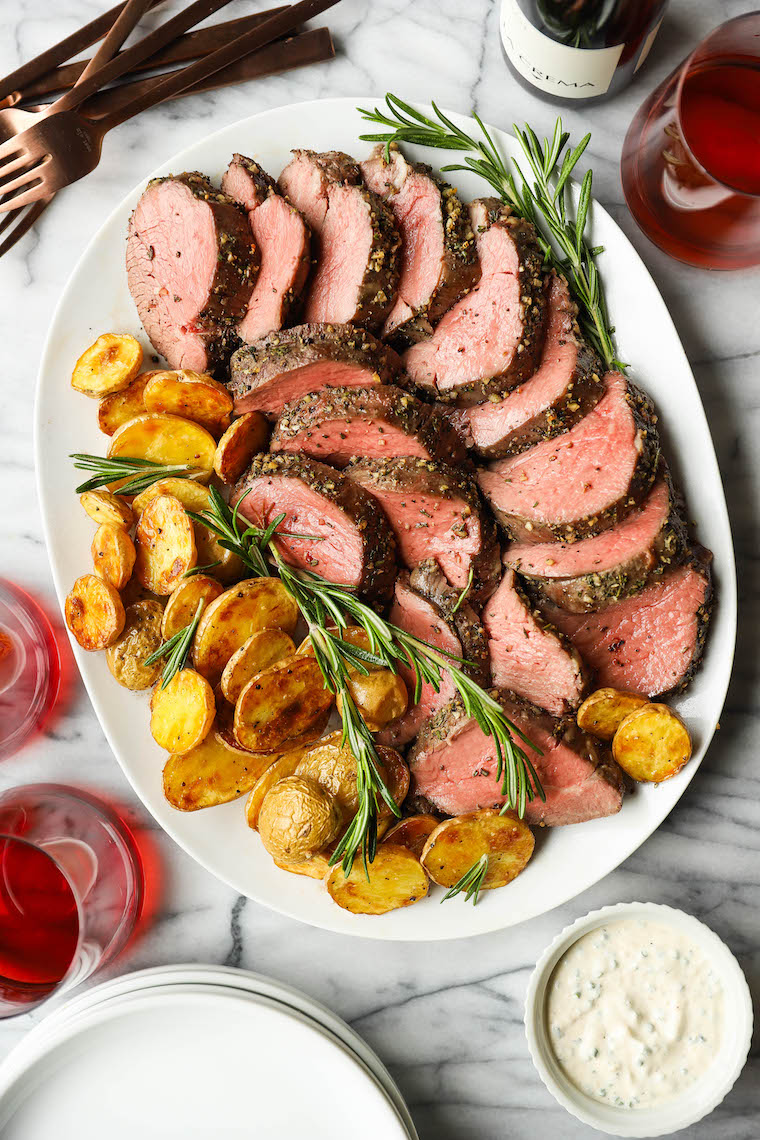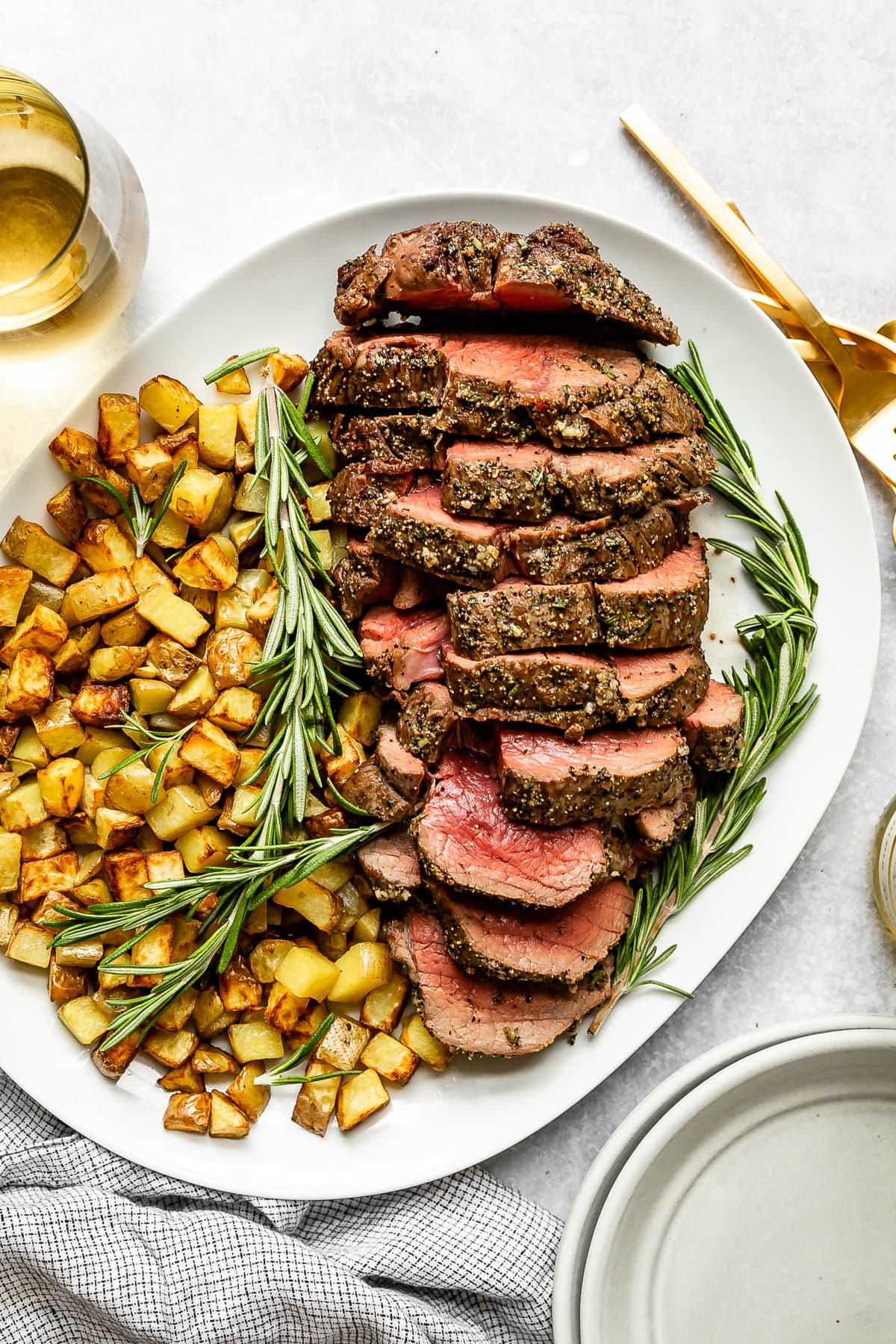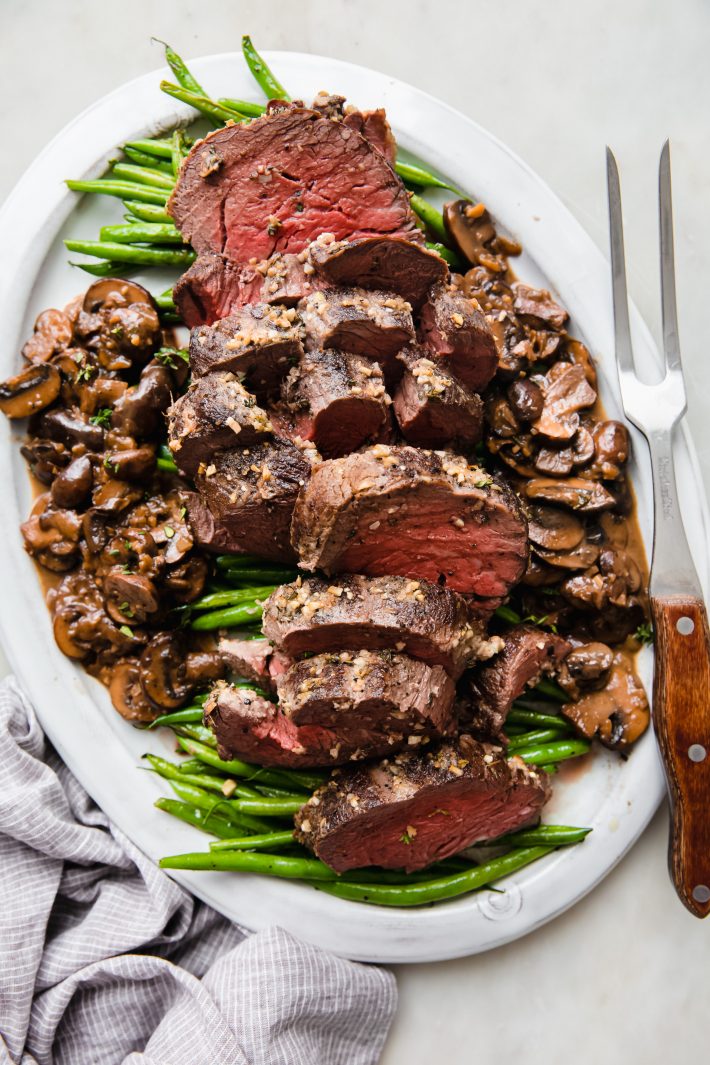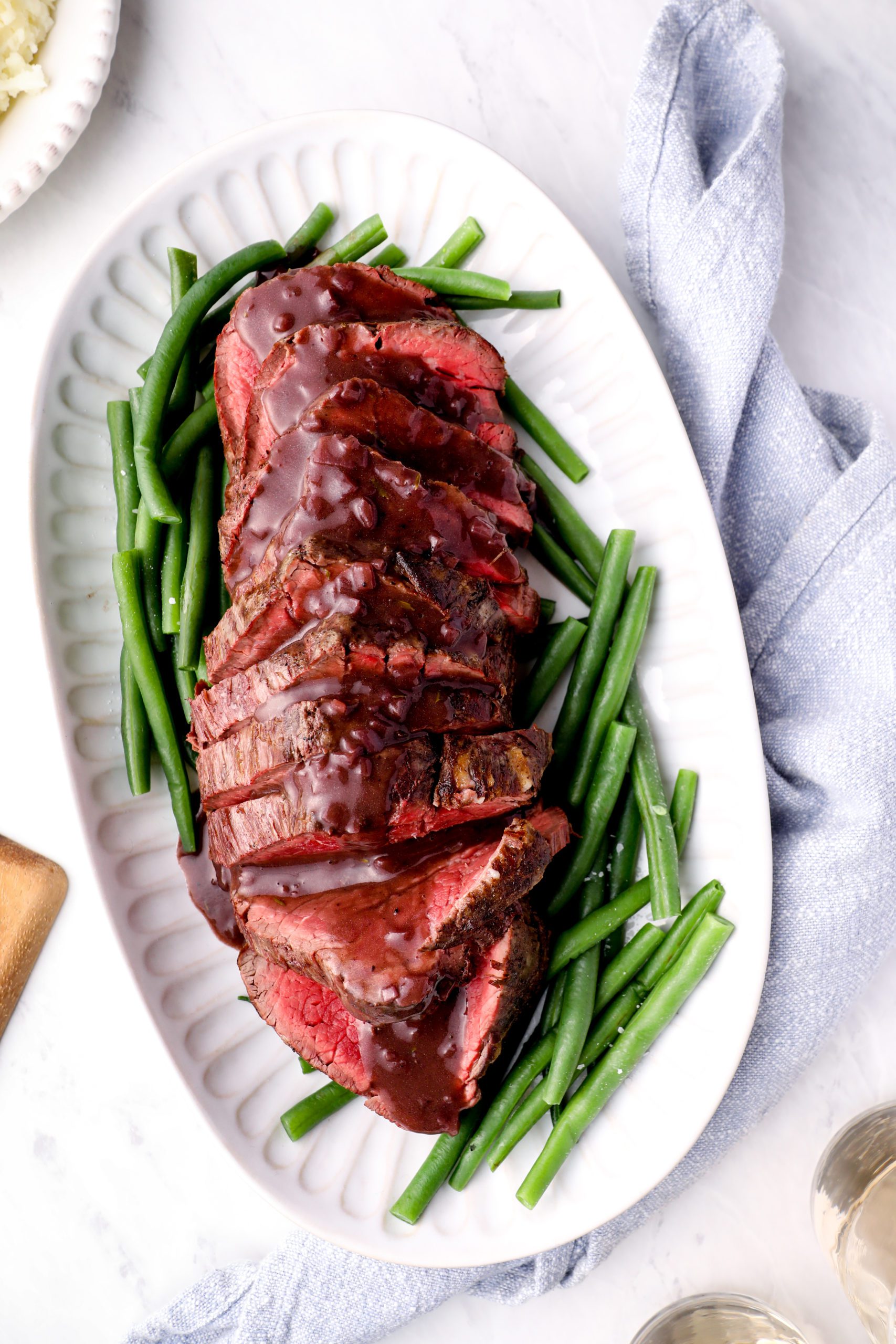When it comes to preparing a succulent and flavorful beef tenderloin, the cooking method can make all the difference. This beloved cut of meat, known for its tenderness and mild flavor, requires careful consideration to ensure that it reaches its full potential on the dinner table. In this comprehensive guide, we’ll explore various cooking methods for beef tenderloin and determine which one yields the best results.
Before delving into the cooking methods, it’s essential to understand the nature of beef tenderloin. As the psoas major muscle, it runs along the spine of the cow and is responsible for minimal resistance work, resulting in unparalleled tenderness. This prized cut boasts minimal connective tissue and fat, relying on its natural flavor and protein-bound water for juiciness.
Characteristics of Beef Tenderloin
- Tenderness: Due to minimal connective tissue and low resistance work.
- Lean: Contains little fat compared to other cuts.
- Flavor: Relies on the meat’s natural flavor, enhanced by proper cooking techniques.
- Juiciness: Maintains moisture through protein-bound water.
Common Cooking Methods
High-Heat Cooking

Ingredients:
- Beef Tenderloin: One whole beef tenderloin, trimmed
- Coarse Kosher Salt: Approximately 1 tablespoon, for seasoning
- Black Pepper: Approximately 1 teaspoon, freshly ground, for seasoning
- Olive Oil: Approximately 1-2 tablespoons, for searing
- Herbs: Optional, such as minced fresh parsley, thyme, or garlic, for additional flavor (quantities can vary according to personal preference)
Cooking Process:
- Preheat: Preheat the oven to 450-500°F (232-260°C), or prepare a grill for high-heat cooking.
- Season: Season the beef tenderloin generously with coarse kosher salt and freshly ground black pepper, ensuring even coverage.
- Sear: Heat a cast-iron skillet, heavy roasting pan, or grill to high heat. Add approximately 1-2 tablespoons of olive oil to the skillet or grill grate. Sear the seasoned beef tenderloin on all sides until well browned, approximately 2 minutes per side.
- Herb Rub: Optionally, rub the seared tenderloin with a mixture of minced fresh herbs (such as parsley, thyme, or garlic) combined with olive oil, black pepper, and salt, to add additional flavor.
- Roast: Transfer the seared beef tenderloin to a wire rack set in a baking sheet or roasting pan. Place it in the preheated oven and roast until the desired internal temperature is reached, typically around 125°F (52°C) for medium-rare. This usually takes around 20-30 minutes, depending on the thickness of the tenderloin.
- Rest: Once the beef tenderloin reaches the desired internal temperature, remove it from the oven and allow it to rest on a cutting board for 5-10 minutes. This resting period allows the juices to redistribute throughout the meat, ensuring maximum tenderness and flavor.
- Slice and Serve: After resting, slice the beef tenderloin against the grain into thick, juicy slices. Serve immediately, garnished with additional herbs if desired.
Slow-Heat Cooking

Ingredients:
- Beef Tenderloin: One whole beef tenderloin, trimmed
- Coarse Kosher Salt: Approximately 1 tablespoon, for seasoning
- Black Pepper: Approximately 1 teaspoon, freshly ground, for seasoning
- Olive Oil: Approximately 1-2 tablespoons, for coating
- Herbs: Optional, such as minced fresh parsley, thyme, or garlic, for additional flavor (quantities can vary according to personal preference)
Cooking Process:
- Preheat: Preheat the oven to 225°F (107°C).
- Season: Season the beef tenderloin generously with coarse kosher salt and freshly ground black pepper, ensuring even coverage.
- Coat: Lightly coat the seasoned beef tenderloin with olive oil, ensuring that it is evenly coated on all sides.
- Optional Herb Rub: Optionally, rub the coated tenderloin with a mixture of minced fresh herbs (such as parsley, thyme, or garlic) combined with olive oil, black pepper, and salt, to add additional flavor.
- Roast: Transfer the seasoned and coated beef tenderloin to a wire rack set in a baking sheet or roasting pan. Place it in the preheated oven and roast at 225°F (107°C) until the desired internal temperature is reached, typically around 125°F (52°C) for medium-rare. This slow-roasting process will take longer than high-heat cooking, approximately 1.5 to 2 hours, depending on the size and thickness of the tenderloin.
- Rest: Once the beef tenderloin reaches the desired internal temperature, remove it from the oven and allow it to rest on a cutting board for 10-15 minutes. This resting period allows the juices to redistribute throughout the meat, ensuring maximum tenderness and flavor.
- Slice and Serve: After resting, slice the beef tenderloin against the grain into thick, juicy slices. Serve immediately, garnished with additional herbs if desired.
Chill-Sear-Cook Method
:strip_icc()/how-to-roast-beef-tenderloin-hero-01-5654836-5412e3597d094cbd8a6f86b2810b0207.jpg)
Ingredients:
- Beef Tenderloin: One whole beef tenderloin, trimmed
- Coarse Kosher Salt: Approximately 1 tablespoon, for seasoning
- Black Pepper: Approximately 1 teaspoon, freshly ground, for seasoning
- Olive Oil: Approximately 1-2 tablespoons, for searing
- Herbs: Optional, such as minced fresh parsley, thyme, or garlic, for additional flavor (quantities can vary according to personal preference)
Cooking Process:
- Preparation: Tie or have your butcher tie the beef tenderloin into a mostly uniform shape, with the tail-end folded up under the roast to help form a uniform thickness.
- Seasoning and Chilling: Season the beef tenderloin generously with coarse kosher salt and freshly ground black pepper. Place the seasoned tenderloin in the freezer until the outside is chilled and firm, but not frozen solid. This typically takes about 30 minutes.
- High-Heat Searing: Preheat a cast-iron skillet, heavy roasting pan, or grill to a high temperature (around 450-500°F or 232-260°C). Add approximately 1-2 tablespoons of olive oil to the skillet or grill grate. Remove the chilled beef tenderloin from the freezer and sear it on all sides until well browned, approximately 2 minutes per side.
- Herb Rub: Optionally, rub the seared tenderloin with a mixture of minced fresh herbs (such as parsley, thyme, or garlic) combined with olive oil, black pepper, and salt, to add additional flavor.
- Low-Heat Cooking: Transfer the seared beef tenderloin to a wire rack set in a baking sheet or roasting pan. Place it in a preheated oven set to a low temperature, typically around 225°F (107°C). Roast until the desired internal temperature is reached, typically around 125°F (52°C) for medium-rare. This slow-roasting process will take longer than high-heat cooking, approximately 1.5 to 2 hours, depending on the size and thickness of the tenderloin.
- Rest: Once the beef tenderloin reaches the desired internal temperature, remove it from the oven and allow it to rest on a cutting board for 10-15 minutes. This resting period allows the juices to redistribute throughout the meat, ensuring maximum tenderness and flavor.
- Slice and Serve: After resting, slice the beef tenderloin against the grain into thick, juicy slices. Serve immediately, garnished with additional herbs if desired.
Experiment: High-Heat vs. Slow-Heat Cooking




 Methodology
Methodology
- Preparation: Two beef tenderloins of similar size were selected and seasoned with salt and pepper.
- Cooking Process:
- High-Heat Cooking: One tenderloin was cooked using the high-heat method. It was seared at a temperature of 450-500°F (232-260°C) for a short duration to achieve a flavorful crust.
- Slow-Heat Cooking: The other tenderloin was cooked using the slow-heat method. It was roasted at a lower temperature of 225°F (107°C) for a longer period of time to ensure gentle, even cooking.
- Monitoring: Throughout the cooking process, temperatures were monitored using a digital meat thermometer to ensure accuracy and consistency.
- Evaluation: Once cooked, the tenderloins were allowed to rest before being sliced and evaluated based on criteria such as color, texture, juiciness, and flavor.
Results
- High-Heat Cooking: The tenderloin cooked using the high-heat method exhibited a flavorful crust due to the Maillard browning process. However, there was a slight grey band around the edges, indicating potential overcooking.
- Slow-Heat Cooking: The tenderloin cooked using the slow-heat method was evenly colored from edge to edge, with no discernible grey band. It retained its tenderness, juiciness, and natural flavor, resulting in a melt-in-your-mouth texture.
Conclusion
While both high-heat and slow-heat cooking methods have their merits, the slow-heat method emerged as the clear winner for preparing beef tenderloin. Its ability to preserve tenderness, achieve even cooking, and deliver a consistently flavorful result makes it the preferred choice for discerning home cooks and chefs alike. However, for those seeking a balance between speed and flavor, the chill-sear-cook method offers a viable alternative.
Whether you’re hosting a dinner party or enjoying a cozy meal at home, mastering the art of cooking beef tenderloin will undoubtedly elevate your culinary repertoire. Experiment with different methods, techniques, and seasonings to discover the perfect preparation that suits your taste preferences and culinary aspirations. After all, cooking is as much about creativity and exploration as it is about following recipes.


